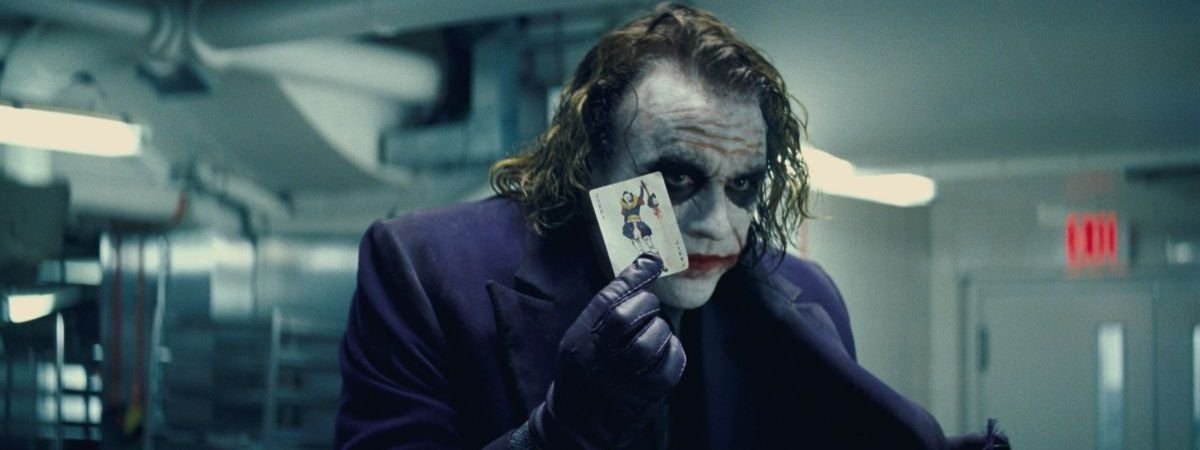Skip to the good bit
ToggleLightsaber combat is a complex and fascinating aspect of the Star Wars universe, involving intricate techniques and deep knowledge of the Force. There are seven recognized lightsaber combat forms, each with unique strengths and intended for different types of combat. From the aggressive acrobatics of Ataru to the defensive strategies of Soresu, every Jedi and Sith can choose a form that best suits their abilities and purpose.
Forms of Lightsaber Combat
Lightsaber combat includes various forms, each catering to different strengths and tactics. These forms have unique styles, techniques, and strategies, making them essential for any Jedi or Sith.
Form I: Shii-Cho

Notable users: Kit Fisto and Luke Skywalker (initially)
Form I, or Shii-Cho, is the oldest and most foundational lightsaber combat form. It is simple and easy to learn, making it ideal for beginners. Shii-Cho focuses on basic moves like blocking, slashing, and striking.
This form is effective against multiple enemies, thanks to its sweeping motions and broad strokes. Its simplicity makes it less effective against more advanced combat techniques.
Shii-Cho emphasizes disarming opponents rather than inflicting severe harm. Many Jedi start with this form to build a solid foundation before moving on to more complex styles.
Form II: Makashi
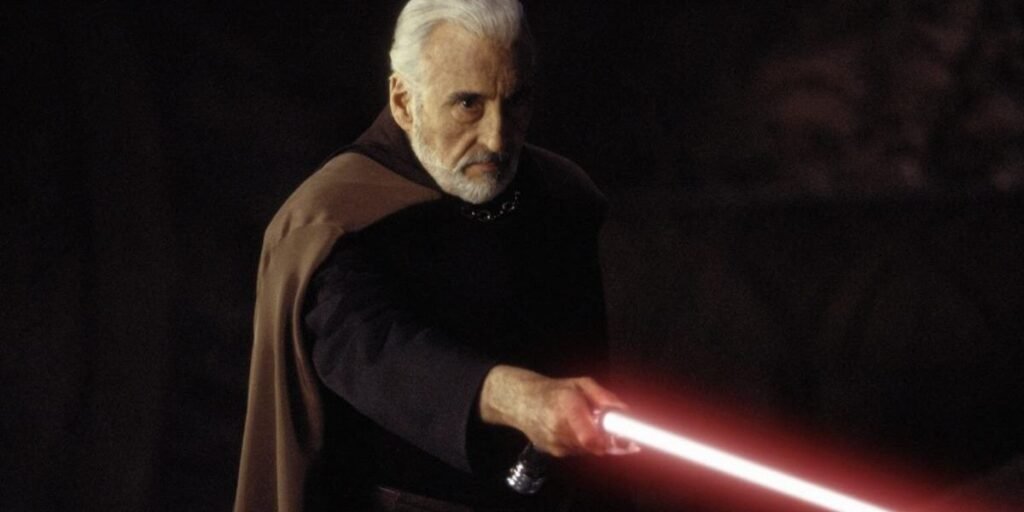
Notable users: Count Dooku (Darth Tyranus)
Form II, or Makashi, is designed for lightsaber-to-lightsaber combat. It is precise and elegant, focusing on balance and footwork. This form emerged when the Jedi faced many Sith opponents, making it essential for dueling.
Makashi practitioners use fluid, precise movements to conserve energy. They aim to outmaneuver and outlast their opponents, making Makashi effective in one-on-one duels.
However, Makashi lacks the strength to deflect blaster bolts or handle multiple opponents effectively. Famous users include Count Dooku, known for his dueling prowess.
Form III: Soresu

Notable users: Obi-Wan Kenobi
Form III, or Soresu, is the ultimate defense form. It focuses on efficient movements to create a nearly impenetrable defense. Soresu is perfect for deflecting blaster bolts, making it ideal for ranged combat scenarios.
Practitioners like Obi-Wan Kenobi are known for their patience and endurance. Soresu users wait for their opponents to make a mistake, then exploit it.
While highly effective defensively, Soresu lacks offensive capabilities. It relies on the user’s ability to outlast and tire their opponent.
Form IV: Ataru

Notable users: Yoda, Qui-Gon Jinn and Ahsoka Tano
Form IV, or Ataru, is an aggressive, acrobatic form that uses Force to enhance speed and agility. It’s highly effective in one-on-one duels, where quick, powerful strikes can swiftly decide the outcome.
Ataru fighters, like Yoda, use flips, spins, and jumps to confuse and overwhelm opponents. This form is visually spectacular but physically demanding.
Ataru’s reliance on acrobatics makes it less effective in confined spaces or against multiple opponents. It also requires the user to be very strong in the Force.
Form V: Shien/Djem So

Notable users: Anakin Skywalker and Luke Skywalker
Form V includes two variations: Shien and Djem So. Both emphasize power and aggression but are used in different contexts. Shien is effective against blaster fire, while Djem So excels in lightsaber duels.
Shien users deflect blaster bolts at enemies, creating offensive opportunities from defensive moves.
Djem So focuses on strong, counterattacking strikes that use the opponent’s energy against them. Practitioners like Anakin Skywalker favor its powerful, decisive tactics.
However, Form V can be physically exhausting and may leave openings for skilled opponents to exploit.
Form VI: Niman
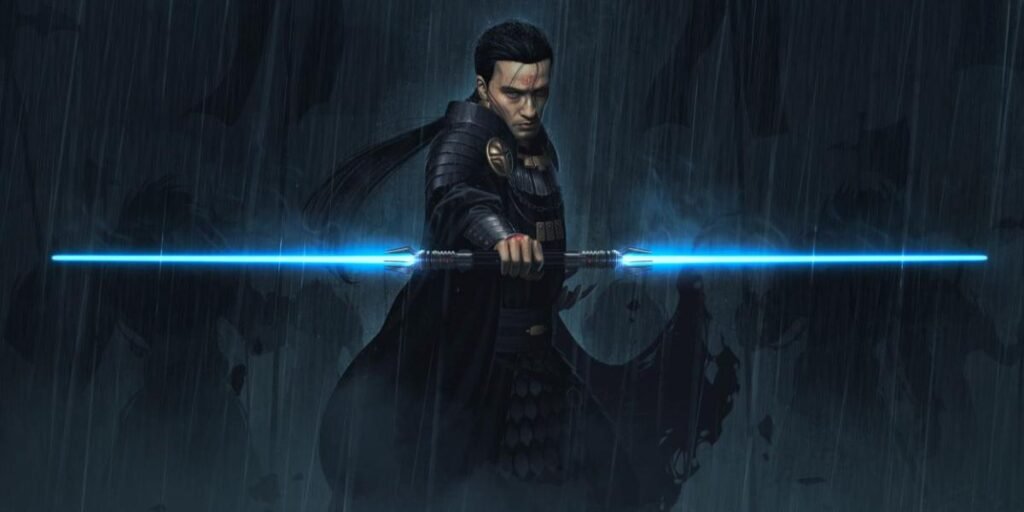
Notable users: Exar Kun and General Grievous (incorporates aspects of it)
Form VI, or Niman, is a balanced form that combines elements from previous forms. It allows for a mix of offense, defense, and Force techniques. This makes it versatile but not as specialized as other forms.
Niman practitioners, like Jedi Consulars, often use it alongside Force abilities for added effectiveness. They can easily adapt to various combat situations.
However, Niman’s jack-of-all-trades nature means it lacks the focused strengths of other forms. It might not be as effective in highly specialized combat scenarios.
Form VII: Juyo/Vaapad

Notable users: Mace Windu (Vaapad) and Darth Maul (Juyo)
Form VII has two main variations: Juyo and Vaapad. Both are highly aggressive and physically demanding. Juyo focuses on unpredictable, intense movements, making it difficult for opponents to anticipate attacks.
Vaapad, developed by Mace Windu, channels inner darkness and converts it into fighting power. It requires the user to be in complete emotional control to prevent falling to the dark side, something he used to fight Darth Sidious.
Juyo and Vaapad are very powerful but risky. The aggressive nature can lead to vulnerability if the user loses control or becomes erratic.
Latest: Star Wars list of planets
Lightsaber Techniques and Tactics
In lightsaber combat, effective fighting relies on a mix of offensive strategies, defensive maneuvers, and the clever use of the environment. Each aspect is crucial to mastering this complex and dynamic form of battle.
Offensive Strategies
Offensive strategies focus on aggressive moves to overpower or outmaneuver an opponent. Form IV, known as Ataru, employs fast, acrobatic attacks to keep the opponent off balance. Ataru users like Yoda leverage their agility to dominate in close quarters.
Another offensive style is Form V, or Djem So, emphasizing strength and power. Practitioners such as Anakin Skywalker use powerful strikes to force their opponents into submission. This form also includes block-and-counter tactics, ensuring constant forward momentum.
Form VII, Juyo or Vaapad, is another offensive style. It blends ferocity with dark-side emotions to unleash a relentless assault. Mace Windu is a renowned user of Vaapad, often overwhelming opponents with speed and unpredictability.
Defensive Maneuvers

Defensive maneuvers are essential for protection and endurance during combat. Form III, Soresu, is the ultimate defense form. Obi-Wan Kenobi mastered Soresu, using minimal movement to block attacks and conserve energy efficiently.
Form II, Makashi, focuses on precision and balance. It was developed specifically for lightsaber duels and emphasizes elegant parries and ripostes to control the fight. Count Dooku is a prime example of a Makashi practitioner who displays finesse and control.
Form VI, Niman, is a balanced form that combines elements from other forms. Similar to Cal Kestis, who combines multiple forms in the Fallen Order and Survivor Star Wars video games. It offers a moderate approach to both offense and defense. While not specializing in any one area, it provides versatility, making it suitable for unpredictable situations.
Environmental Advantage
Using the environment to an advantage can turn the tide of a duel. Jedi and Sith alike utilize their surroundings to gain the upper hand. Strategic positioning can offer cover, obstacles, or distractions during a fight.
Forms incorporating acrobatics, like Ataru, can be highly effective in confined spaces. Jedi can move rapidly, using walls and objects to launch attacks. Conversely, forms like Djem So can leverage direct, powerful strikes without obstacles in open spaces.
Environmental factors also include natural elements. Skilled fighters might use the terrain – such as rocky ground or dense forests – to outmaneuver less adaptable opponents. Understanding and manipulating the environment is a critical tactical skill in lightsaber combat.
Training and Mastery
Training and mastery in lightsaber combat involves various stages. From the initial teachings of younglings to the advanced techniques of Jedi Masters and the unique Sith training philosophies, each stage has specific methods and goals.
Younglings and Padawans
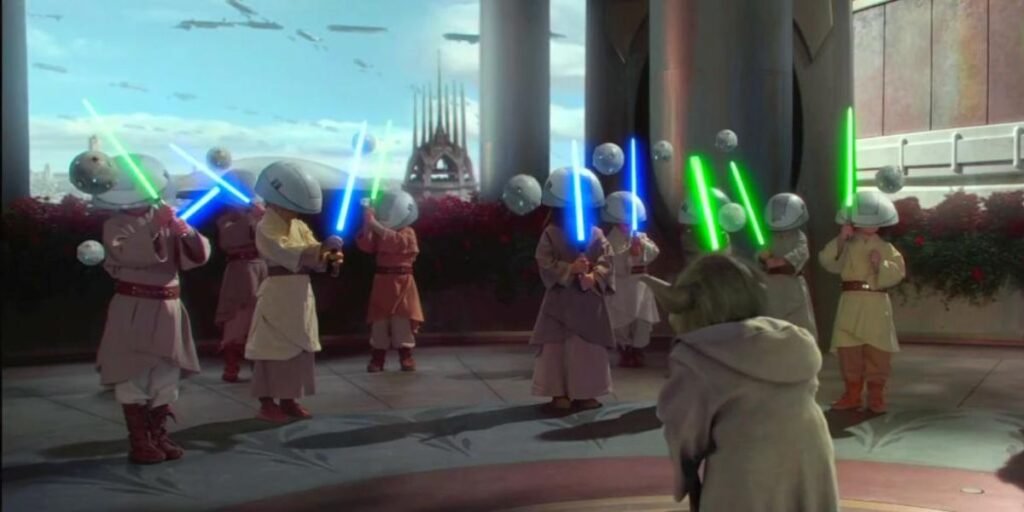
Younglings begin their training by learning basic lightsaber moves. They often practice with training sabers, which are less dangerous. The focus is on coordination, agility, and understanding the Force.
Once a youngling becomes a Padawan, they are paired with a Jedi Knight or Master. Training gets more intense and personalized. Padawans learn better control and advanced techniques. They also practice forms like Shii-Cho, which helps them build a strong foundation.
Jedi Knights and Masters
Jedi Knights continue to refine their skills and often specialize in one or more lightsaber forms. They practice daily to maintain their abilities and adapt to new challenges. Mastering forms like Makashi or Ataru requires dedication and a deep connection to the Force.
Jedi Masters are expected to be proficient in multiple combat styles. They also teach and guide younglings and Padawans. Training under a Master involves complex drills, mental exercises, and real sparring sessions. The goal is to be ready for any situation they might encounter.
Sith Training Philosophies
Sith training focuses on power and aggression. Apprentices often start with brutal training sessions that push them to their limits. The Sith emphasize combat readiness and strength. Unlike the Jedi, Sith training allows using emotions like anger and fear to fuel their combat skills.
Sith Masters demand absolute loyalty and often employ harsh methods to ensure their apprentices’ success. Advanced Sith learn forms such as Juyo and Dun Möch, designed to overpower and intimidate opponents. The path to mastery for a Sith is ruthless and often life-threatening.
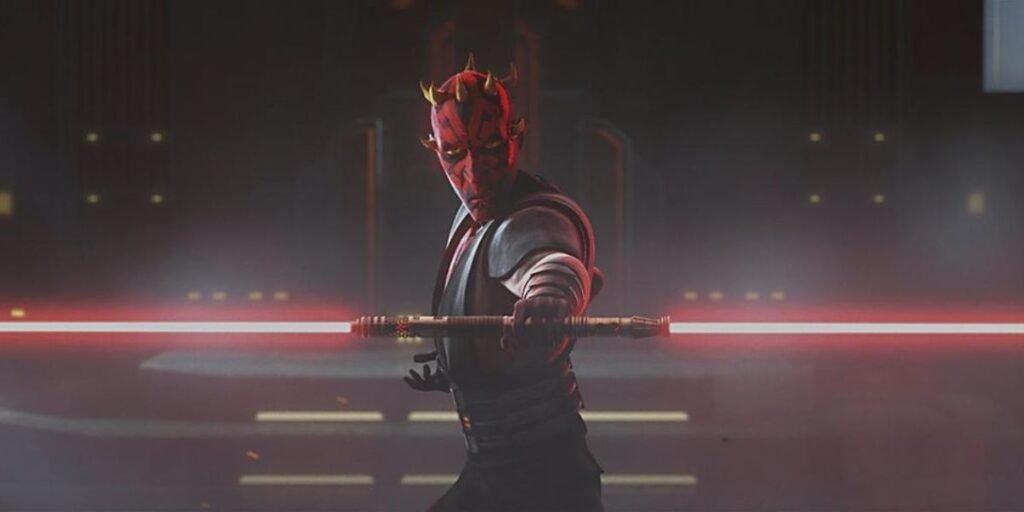
Related read: 66 Star Wars facts
How many forms of lightsaber combat are there?
There are seven recognized forms of lightsaber combat in the Jedi Order. Each form has its own unique techniques, strengths, and weaknesses, tailored to different combat scenarios.
Who uses what lightsaber fighting styles?
Form I, Shii-Cho, is the basic form focused on disarming and handling multiple opponents, and it is used by Kit Fisto and early Luke Skywalker. Form II, Makashi, emphasizes precision and is used by Count Dooku. Form III, Soresu, prioritizes defense and is mastered by Obi-Wan Kenobi. Form IV, Ataru, is acrobatic and aggressive, favored by Yoda, Qui-Gon Jinn, and Ahsoka Tano. Form V, Shien/Djem So, balances offense and defense, utilized by Anakin Skywalker. Form VI, Niman, integrates elements from previous forms and Force abilities, known for its versatility, and used by Darth Maul. Form VII, Juyo/Vaapad, is highly aggressive and emotionally charged, mastered by Mace Windu and Darth Maul.
What is form I lightsaber style?
Form I, known as Shii-Cho, is the oldest and most basic form. It focuses on disarming opponents and broad, sweeping motions. It is often taught to younglings as an introduction to lightsaber use, emphasizing fundamental techniques.
Which lightsaber fighting style is used by the Sith?
Form VII, called Juyo or Vaapad, is considered the most aggressive form. Practitioners channel their anger and aggression into their fighting style, making it a favorite among Sith and dark side users.
What is the ‘forbidden form’ of lightsaber fighting style?
The “forbidden form” often refers to Form VII, particularly its Vaapad variant. Vaapad skirts close to the dark side, harnessing inner darkness and aggressive tendencies. This makes it dangerous and potentially corrupting for the Jedi; thus, it is rarely taught or used.
What is the most popular lightsaber fighting style?
Form V is the most popular lightsaber fighting style or Shien/Djem So. This form is widely favored due to its balance between offense and defense. It emphasizes using counter-attacks and leveraging an opponent’s strength against them. Iconic Jedi such as Anakin Skywalker and Luke Skywalker are known practitioners of Form V, which adds to its popularity.
What is the best lightsaber fighting style?
Determining the “best” lightsaber fighting style is subjective and depends on the user’s preferences and abilities. However, many consider Form III, Soresu, to be the most effective for defense. Known for its energy-efficient movements and solid defensive posture, Form III allows practitioners to outlast opponents. Jedi Master Obi-Wan Kenobi famously utilized this style significantly, especially in prolonged duels.
What is the deadliest form of lightsaber combat?
Form VII, called Juyo/Vaapad, is often regarded as the deadliest form of lightsaber combat. This style is highly aggressive and unpredictable, requiring intense focus and emotional control. It’s considered dangerous for the opponent and the practitioner, as it involves channeling inner darkness and aggressive emotions. Mace Windu is one of the few Jedi who mastered this form, adapting it into his unique Vaapad variant.









